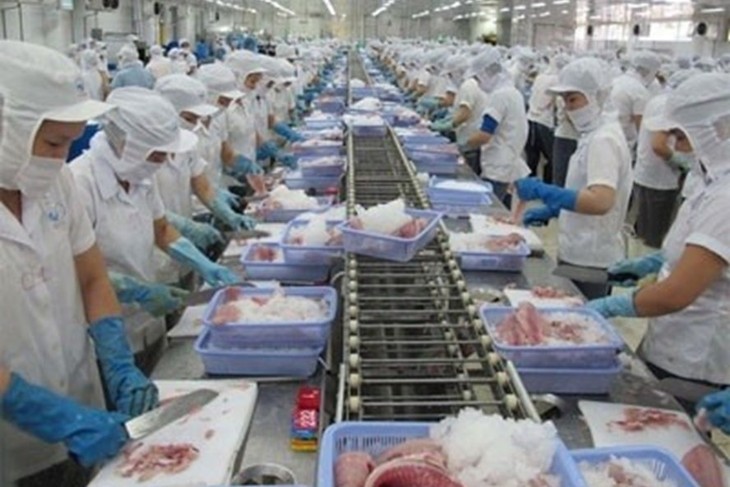(VOVWORLD) - August 1st marked one year since the EU-Vietnam Free Trade Agreement (EVFTA) took effect. In that year, many industries and sectors including seafood exports have made good use of the trade deal.
 The advantages of the EVFTA have increased Vietnam’s seafood exports to the EU. (Photo: VASEP) The advantages of the EVFTA have increased Vietnam’s seafood exports to the EU. (Photo: VASEP) |
The Vietnam Association of Seafood Exporters and Producers (VASEP) reports that in the first half of this year, Vietnam earned 486 million USD from seafood exports to the EU market, up 20% over last year, of which the export of natural aqua-products increased 24% to 154 million USD, while aquaculture products went up 18% to 333 million USD.
The EU is Vietnam’s fourth biggest aquatic export market, accounting for 11%, followed by the US, Japan, and China.
Luong Hoang Thai, Director of the Multilateral Trade Policy Department of the Ministry of Industry and Trade, said aquatic export is one of the industries that have embraced the EVFTA’s advantages.
“The aquatic sector has high added value and is helping Vietnam change its export structure. In the first half year of the trade deal, it has taken advantage of 70% of the EVFTA for Vietnam’s total export volume to the EU, a high rate compared with other agreements,” said Thai.
 Nguyen Hoa Nam, VASEP’s Deputy Secretary (Photo credit: VASEP) Nguyen Hoa Nam, VASEP’s Deputy Secretary (Photo credit: VASEP) |
Echoing this opinion, Nguyen Hoai Nam, VASEP’s Deputy Secretary General, said Vietnam's seafood exports to the European market were hampered by both the COVID-19 pandemic and the EC’s IUU yellow card, but an increase over the past 6 months was made possible by making the most of the EVFTA.
According to Nam, “The EVFTA has proved its benefit because most of Vietnam’s key groups of export products, including shrimp, tuna, squid, and octopus, have enjoyed 0% tariffs since it came into force. That’s a lifebuoy for Vietnam, who is suffering the dual difficulties of the EC’s yellow card and the ongoing pandemic.”
He said that although the trade deal has significantly increased the competitive advantages of Vietnam's fisheries industry, Vietnam’s achievements were made possible by its careful preparations for integration.
“The aquatic industry is different from other industries. True integration began between 1998 and 1999 when the Vietnamese seafood industry was supported by Denmark, and Vietnamese businesses began to make methodical investments, helping Vietnam join the list of nations allowed to export to Europe in 1999. Since then the number of factories eligible to export to Europe has increased from 19 to more than 600," said Nam.